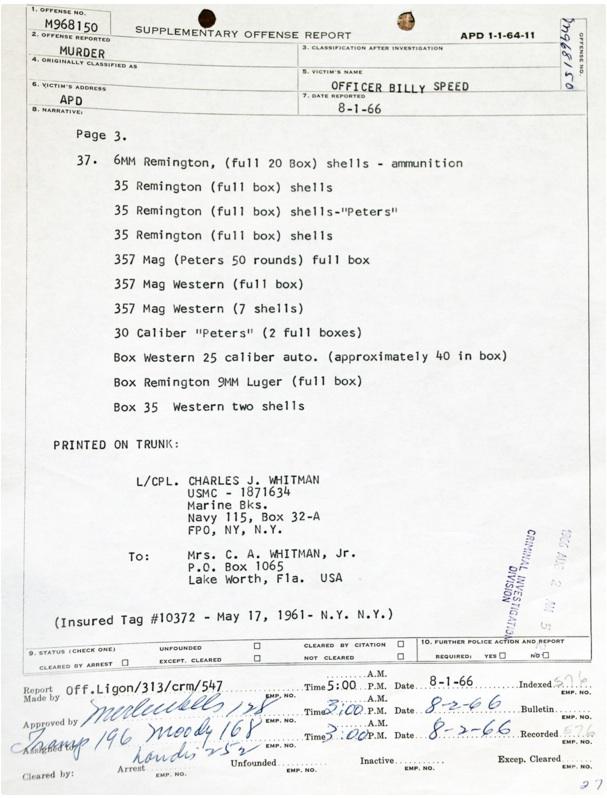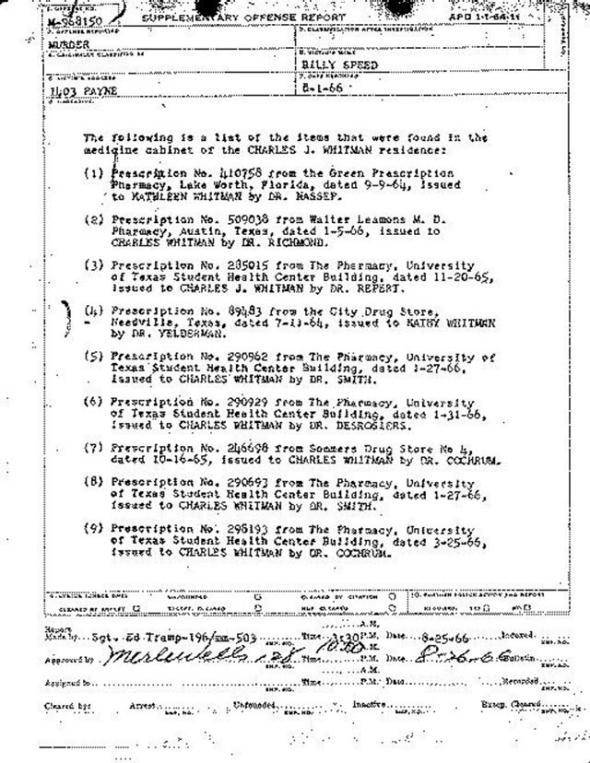A graduate class at the University of Texas at Austin has put together a new website about the mass shooting at the university, which took place fifty years ago Monday. On Aug. 1, 1966, Charles Whitman, a student and former serviceman, occupied the tower at the center of campus, shooting 14 people and wounding more than 30, before he himself was killed by police.
“These are events that cry out to be studied,” writes Joan Neuberger, the historian who led the seminar, in an introductory note. The students used the archives at the Austin History Center and the university’s Briscoe Center of American History to research the shootings and their aftermath. The result is an intriguing suite of essays, accompanied by archival documents, biographies of the shooting victims, and a timeline of mass shootings.
Some of the most interesting essays on the site put Whitman in cultural context. In two essays about Whitman and mental health, Rebecca Johnston writes that while the university did respond to the shootings by implementing a comprehensive mental health plan, Whitman’s extensive amphetamine use—common on college campuses at the time—was investigated, then largely dropped from sight. “It seems a lost opportunity that Whitman’s case was not at least used to put a face to the epidemic,” Johnston writes in her essay about Whitman’s drug use. “Decades of normalization allowed a Caucausian, middle-upper-class, male ex-marine to spend four years feeding an increasingly destabilizing drug habit and suffering virtually no social or economic consequences for it.”
And in an essay about Texas gun culture, Isaac McQuistion writes about the way Whitman’s arsenal, and the actions of the civilians who shot back at him while he was still barricaded atop the tower, were perceived, given the midcentury Texan attitude toward firearms. Annotating a police inventory of the trunk Whitman took with him to the top of the tower, McQuistion writes, “His stockpile demonstrated that he was planning on holding out for a substantial period of time, but area sportsmen didn’t regard his collection as anything out of the ordinary.”

Austin History Center, Austin Public Library

Austin History Center, Austin Public Library

Austin History Center, Austin Public Library
